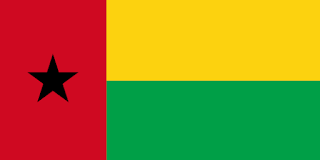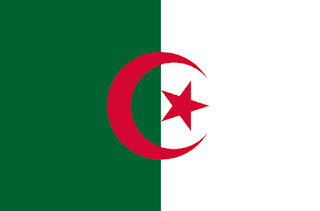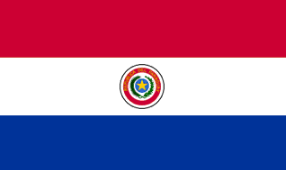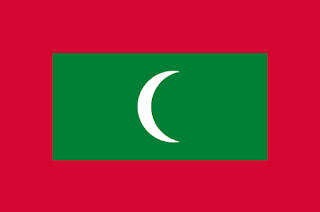FACTS ABOUT GUINEA-BISSAU
AMAZING FACTS ABOUT GUINEA-BISSAU
1.
Guinea-Bissau is officially known as the
“Republic of Guinea-Bissau”
2.
Bissau is the capital city of Guinea-Bissau.
3.
The total population of Guinea-Bissau is
1,815,698.
4.
The natives of Guinea-Bissau are called Bissau-Guineans.
5.
The West African CFA franc (XOF) is
official currency of Guinea-Bissau.
6.
Guinea-Bissau shares a border with Senegal
and Guinea.
7.
It is the 134th
largest country in the world in terms of land area.
8.
It is the 148th
largest country in the world in terms of population.
9.
Guinea-Bissau is a country on the
western coast of Africa.
10.
Guinea-Bissau has a swampy coast, with
forests changing to grasslands in the east.
11.
The name of its capital city, Bissau,
was added to the country's name to prevent confusion with Guinea.
12.
Guinea-Bissau is a member of the United
Nations, African Union, Economic Community of West African States, Organisation
of Islamic Cooperation, Community of Portuguese Language Countries, La
Francophonie and the South Atlantic Peace and Cooperation Zone.
13.
The highest point on Guinea-Bissau is
300 meters (984 feet) above sea level at an unnamed location in the northeast
corner of the country.
14.
Guinea-Bissau has 350 kilometers (217
miles) of coastline. It is dominated by a few scattered beaches and swamps of
mangroves.
15.
Off the coast of Guinea-Bissau is the
Bijagos Archipelago, a group of about 88 islands and islets located in the
Atlantic Ocean. Only some 20 islands are populated year-round. The archipelago
was declared in 1996 a UNESCO Biosphere Reserve—Boloma Bijagós Biosphere
Reserve, known for animals including marine turtles, hippopotamus and the
southern islands are today a nature reserve.
16.
The most famous tourist attraction and
national park in Guinea-Bissau is the Orango Islands National Park.
17.
Bissau Cathedral, also known as Sé
Catedral de Nossa Senhora da Candelária (Cathedral of Our Lady of Candelaria)
is a Christian cathedral in Bissau, Guinea-Bissau.
18.
Once hailed as a potential model for
African development, the country is now one of the poorest countries in the
world.
19.
The vital cashew nut crop provides a
modest living for most of Guinea-Bissau’s farmers and is the main source of
foreign exchange.
20.
Guinea-Bissau also exports non-fillet
frozen fish and seafood, peanuts, palm kernels, and timber.
21.
Rice is a staple in the diet of
residents near the coast and millet a staple in the interior. Fruits and
vegetables are commonly eaten along with cereal grains.
22.
There are about 40% Muslims, 22%
Christians, 15% Animists and 18% unspecified or other.
23.
Football is the most popular sport in
Guinea-Bissau.
24.
The Guinea-Bissau Carnival is a cultural
extravaganza that explodes onto the streets of the capital Bissau during
February when the weather is also at its most pleasant. The carnival takes
place over the four days before Lent, is like no other.
25.
Guinea-Bissau and the Islands of Cape
Verde until 1980 were a single country. It was a coup which successfully
separated the countries into two separate nations.
26.
Guinea-Bissau’s flag draws its
inspiration from the flag of the Republic of Ghana. It was the struggle of the
Ghanaians for freedom that inspired the people of Guinea-Bissau to put up a
fight for their very own.
27.
The Sporting Club Bissau is the biggest
football club in Guinea-Bissau and is based in the country’s capital. The club
enjoys a massive fan following across the country.
28.
Bissau is also the site of a modern
international airport, while several aerodromes and landing strips serve the
interior. In 2004 there were an estimated 28 airports, of which only 3 had
paved runways (as of 2005).
29.
The country is now the world’s
sixth-largest producer of cashews.
30.
In 2003, there were an estimated 8
mainline telephones for every 1,000 people. The same year, there was 1 mobile
phone in use for every 1,000 people.
31.
Game shooting, a major attraction for
many travelers in Africa, is popular in Guinea-Bissau. Game is abundant in the
open country, as well as in the more hazardous forest and jungle areas.
32.
In 2003, 15 of every 1,000 people had
access to the Internet.
33.
Soccer is Guinea-Bissau’s most popular
sport. People take advantage of a short workday during the rainy sea- son to
attend local soccer matches.
34.
Some urban residents enjoy basketball
and tennis, while traditional wrestling (luta livre) is popular in rural areas.
35.
Guinea-Bissau Exports:
non-fillet frozen fish, cashew nuts, peanuts, palm kernels and lumber.
36.
Guinea-Bissau Imports:
refined petroleum, rice, soups and broths, malt extract and cement.
37.
The internet country code for Guinea-Bissau
is .gw.





Comments
Post a Comment